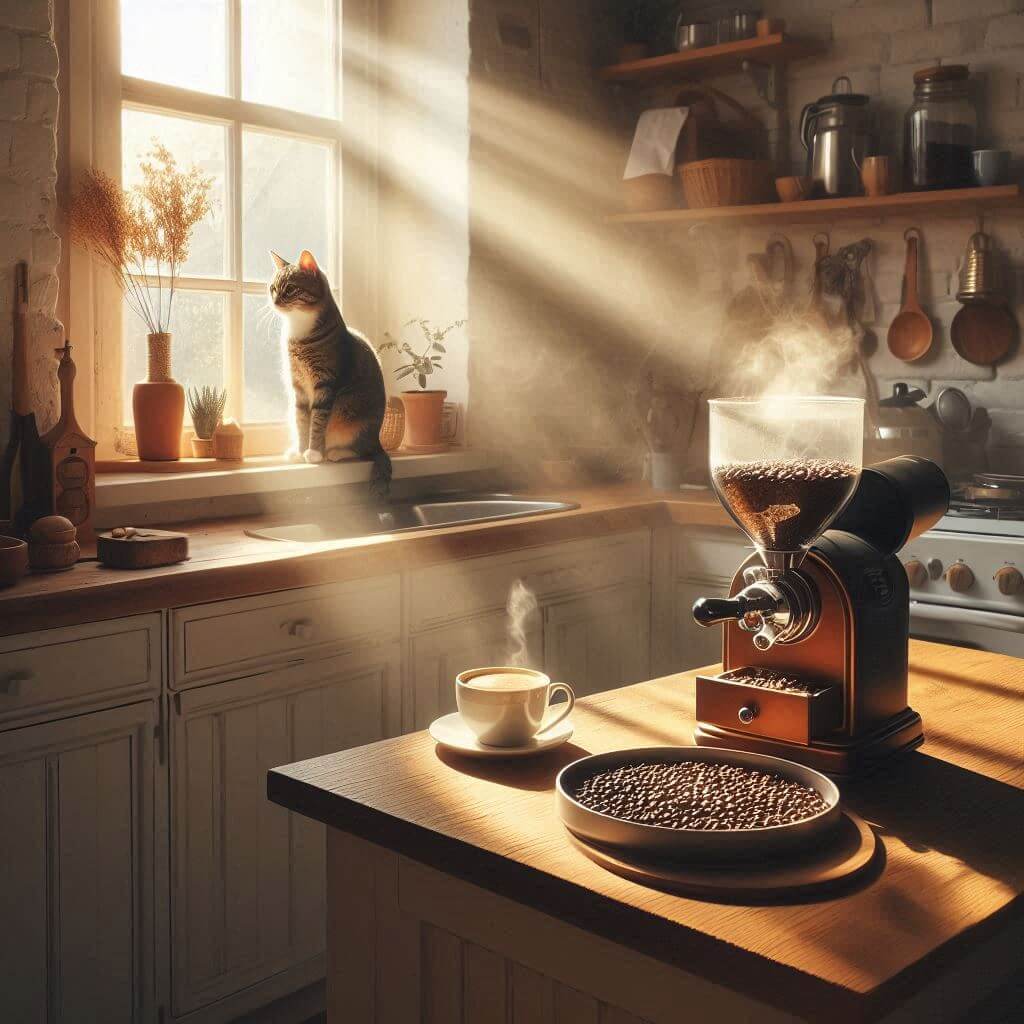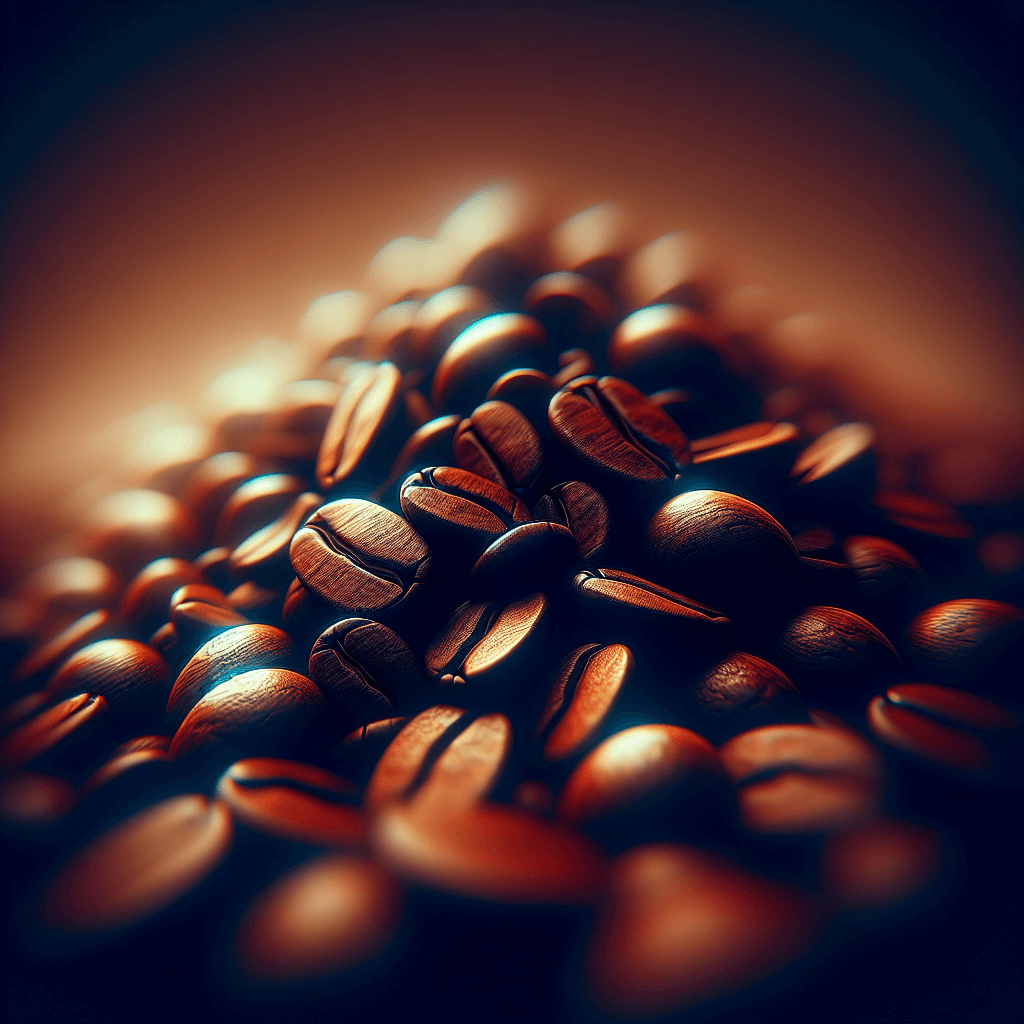
Home roasting of coffee beans has gained considerable popularity among coffee lovers in recent years. Before starting the frying process itself, it is important to collect the necessary tools and equipment. The type of equipment you choose depends largely on your personal preferences and budget.
The basic entry-level option is a stovetop popcorn popper that allows you to manually control the roasting process. Popcorn is affordable and easy to use, but it requires constant attention and manual stirring to ensure even roasting. Another simple way is to use a tray and oven. Spread the green beans in a single layer on the sheet and roast them in the oven, stirring often to get an even roast. Both methods can be inconsistent and do not provide precise control of roasting temperature and time.
For those serious about roasting coffee, a dedicated coffee roaster is a worthwhile investment. Two popular types of home coffee makers are air roasters and drum roasters. Air roasters, also known as fluidized bed roasters, use hot air to roast beans. They are generally faster and more affordable than grills but may have less power. Drum roasters, on the other hand, use a rotating drum to ensure even heating of the beans. They tend to be more expensive, but offer better control over the roasting process and can handle larger batches.
Temperature control is critical to achieving the perfect roast, so choose a roaster that allows you to precisely set and adjust the temperature. Some advanced models come with programmable profiles that allow you to set specific temperature curves for different levels of roasting. This feature can be especially useful for experimenting with different roasting techniques and achieving consistent results.
In addition to the roaster, you’ll need a cooling tray or station to quickly cool the beans after roasting. Rapid cooling is essential to stop the roasting process and prevent the beans from over-roasting, which can lead to a burnt or bitter taste. A simple cooling tray with a fan can do the job effectively.
Digital scales are another essential tool for home coffee roasters. Accurately measuring green beans ensures consistency in your roasting efforts. Aim to measure beans to the nearest gram to precisely control roasting batches.
An airtight container is essential for storing roasted coffee beans. Ceramic, stainless steel, or dark glass containers are ideal as they protect the beans from light, air, and moisture. Some containers are equipped with a one-way valve that allows CO2 to escape without allowing oxygen in, keeping the beans fresher for a longer period.
Understanding The Coffee Bean
Understanding the anatomy and life cycle of coffee beans is essential to roasting coffee beans effectively. Coffee beans are the seeds of the coffee plant, specifically the coffee cherry. During picking, the outer layer of the coffee cherry is removed to reveal the green coffee beans inside. These green beans are dense and contain a significant amount of moisture, usually around 10-12%. Before roasting, they release the aroma of raw grass.
The roasting process transforms these beans into different stages, which affects their physical and chemical properties. At first, the beans are small, hard, and green. When exposed to heat, the moisture inside turns to steam, causing the beans to expand and change color from green to yellow. This means the start of the roasting process.
The most significant chemical change during frying is the Maillard reaction. This reaction occurs when the amino acids and reducing sugars in the grains react with heat, resulting in complex flavors and brown color. The Maillard reaction is responsible for much of the complexity of the flavor of roasted coffee.
There are several stages during the roasting of beans:
- Drying phase: beans lose moisture during heating. This step is crucial because it prepares the beans for the chemical reactions that will take place later. During this phase, the color of the beans changes from green to yellow.
- Brown Phase: as the beans continue to heat, the Maillard reaction begins and the beans begin to turn brown. The aroma goes from grassy to more familiar coffee. This phase develops the flavor and aroma components of the beans.
- First Crack: the first crack is the sound that occurs when the internal pressure of the beans causes them to crack. It sounds like popcorn popping. This phase signals that the beans have reached the lightly roasted stage and developed much of their flavor.
- Development phase: after the first crack, the beans continue to roast, developing their flavor. The longer the beans are in this phase, the darker the roast becomes. Controlling the time in this phase allows you to use different roasting profiles, from light and sour to dark and bold.
- Second crackle: the second crackle is another sound that indicates a darker roast. This crack occurs when the beans release their oils to the surface, intensifying the flavor. This stage needs careful monitoring as it can quickly lead to over-roasting, giving a burnt or bitter taste.
Understanding these stages allows home roasters to manipulate the roast profile to achieve the desired flavor and aroma. Knowing how beans react to heat and time helps you adjust the process to suit your taste preferences.
Frying Process
The process of roasting coffee beans itself consists of several main stages. The first critical step is to preheat your broiler to the desired temperature. Depending on the type of grill you are using, the preheat time may vary. Air roasters usually take about 5 minutes to preheat, while drum roasters can take up to 15 minutes. Target preheat temperatures typically range from 375°F to 500°F, depending on specific roasting goals and equipment.
After preheating the roaster, green coffee beans are added. The initial roasting stage is known as the drying phase when the beans lose moisture and their internal structure expands. This phase lasts approximately 4-8 minutes, depending on the initial moisture content of the beans and the temperature of the roaster. During this time, the green beans will turn yellow.
As the beans dry, they enter the browning phase. This is where the Maillard reaction begins and the beans begin to develop their color and complex flavors. The browning phase usually lasts 5-10 minutes. The aroma becomes more pronounced, moving from an herbal smell to a more familiar coffee aroma. Temperatures during this phase typically range from 320°F to 380°F.
The first crack is an important milestone in the roasting process. This is an audible signal, similar to the sound of popcorn popping, that indicates that the kernels have reached the initial level of roasting, usually at temperatures between 385°F and 395°F. The first crack usually appears 8-12 minutes after frying. This stage marks the transition from the roasting phase to the development phase, where the beans begin to develop their full flavor profile. At this point, you can stop roasting for a lighter and more acidic coffee, or continue roasting for a fuller brew.
If you continue beyond the first crack, you will reach the development phase, also known as the caramelization phase. This stage lasts from 2 to 5 minutes and is crucial for fine-tuning the taste of the final product. Temperatures during this phase typically range from 400°F to 430°F. The length of time you keep the beans in the developing phase will determine the balance between acidity and content in your coffee.
Moving into the second crack means a darker roast, occurring at temperatures between 445°F and 455°F. This stage usually occurs 12-15 minutes after roasting, depending on the type of beans and the desired level of roasting. The second crack is another series of beeps that indicate the oil is starting to float to the surface of the beans. The flavor becomes more intense and strong, often with a smoky, bittersweet profile. It is very important to keep a close eye on the beans at this stage, as the risk of over-roasting increases. Over-roasting can result in a burnt or bitter taste, which may be undesirable.
Once the desired level of roast is reached, quickly transfer the beans to a cooling tray to stop the roasting process. Effective chilling should reduce the grain temperature from over 400°F to room temperature within 1-2 minutes. Proper cooling is critical to preserving flavor and preventing further development that can lead to over-roasting the coffee. Allow the beans to cool completely before storing them in an airtight container.
Storage and Brewing
Proper storage of roasted coffee beans is key to preserving their freshness and flavor. Beans should be stored in an airtight container, away from light, heat, and moisture. Ideally, roast enough beans to last you a week or two so you always have fresh coffee on hand.
When it comes to brewing, the size and method of grinding have a significant impact on the final cup. Experimenting with different brewing techniques, such as pour-over, French press, or espresso, can help you determine which method will bring out the best in your home-roasted beans. Freshly roasted beans usually reach their peak flavor a few days after roasting, so letting them rest for a short period can improve the overall coffee experience.

